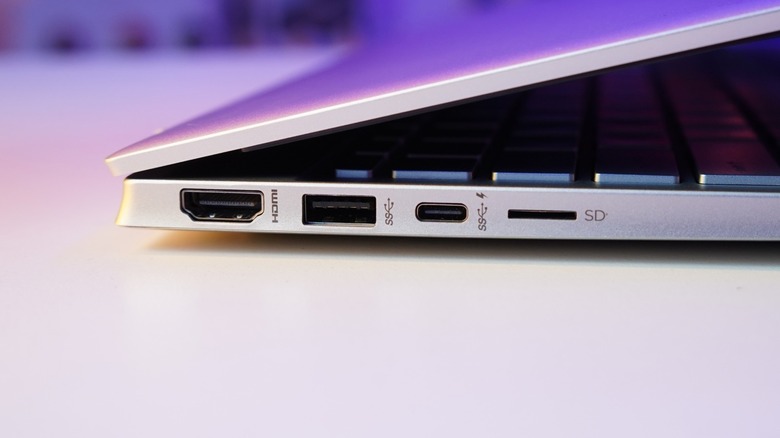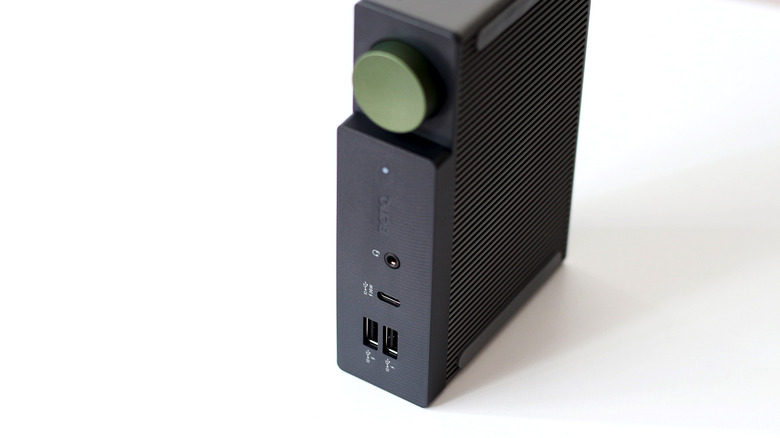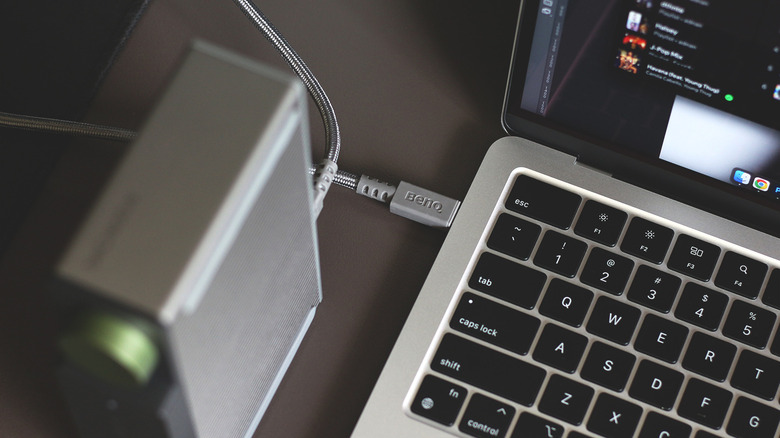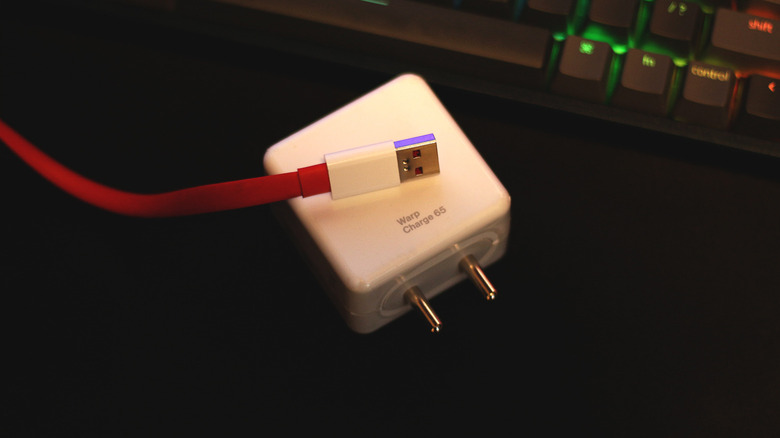How Much Power Can A USB Port Deliver & Does Max Output Change Depending On Device?
It's tough to imagine a time before USB, when connecting devices to your computer meant juggling between a myriad of proprietary ports. As a solution, Intel, alongside other companies like Microsoft and IBM, introduced USB, or the Universal Serial Bus, in 1996, and the world of computers and accessories has never been the same since. USB-A is the most popular type of port that can be found on desktop computers, laptops, and power adapters.
In recent years, however, we've seen smartphones, laptops, and accessories switch to USB Type-C, which uses a considerably smaller connector than USB-A. Though the transition hasn't been the most elegant, most smart devices you can purchase now come equipped with USB-C. Apart from being small and reversible, USB-C brings a plethora of technical improvements over its predecessor.
For starters, you see a monumental jump in data transfer rate, which is why the USB-C port on the iPhone (Pro models only) now lets you offload large video files in seconds. USB-C is also prominently known for its fast-charging capabilities. That said, if you plug an accessory into any older USB-A port, it's still going to start charging — though how fast is the real question.
Power output across different USB standards
Though USB was initially implemented to transfer data between devices, it has always been able to supply a device with electric current, and thus, USB charging was born. Power delivery is measured in watts, the total value for which is calculated by multiplying voltage (volts, V) and current (amps, A). USB 1.0 and 2.0 are both capable of delivering 5V at 0.5A, which works out to 2.5W. This is just about enough to charge small accessories like a pair of wireless earphones or a mouse. So the next time you plug your phone into a computer, and it takes ages to top up, realize that you've picked an ancient port.
USB 3.0 stepped power output up to 5V at 0.9A, giving us a more tolerable 4.5W. Some USB 3.0 ports that are designed for charging can supply 5V at 1.5A, or up to 7.5W. Though these numbers still pale in comparison to the super-fast charging phones we have today, a USB 3.0 port can still come in clutch during emergencies.
A regular USB-C port without Power Delivery can push 5V at 3A, or 15W, which is a more acceptable charging speed for most smartphones and accessories today. However, with USB Power Delivery 3.0, we jump straight to 100W, which is 20V at 5A — or up to 240W with USB PD 3.1. This makes it the perfect port capable of charging bigger devices like laptops, and even powering some USB-C monitors.
What affects the max output of a USB port?
When you plug in a device for charging, a handshake occurs between the USB device and the host — at least with USB-C devices, that is. Thanks to the CC (Configuration Channel) pins, USB PD lets the port negotiate the ideal voltage and current for the device. For example, a phone may ask for 9V at 2A, for a total charging speed of 18W — while a laptop could demand 20V at 3A, or 60W. The advantage of USB PD is that the protocol can step through different voltages like 5V, 9V, 15V, and 20V, ensuring your device gets exactly the power it needs without overloading it or wasting much energy.
Though USB 3.0 and older ports don't have dedicated CC pins to dynamically change voltage levels and are stuck at 5V, they still adjust current and prevent instances where overcurrent could damage the battery.
Power output in proprietary chargers
Though a USB 3.0 dedicated charging port (DCP) is rated to deliver up to 7.5W, you may have noticed certain smartphones that top up rather quickly through a wall charger that uses a USB-A port. This is thanks to proprietary charging technology, like OnePlus' SuperVOOC or Qualcomm's Quick Charge, that bypasses USB-A's standard limits by letting the wall charger do the heavy lifting. This is how you get charging speeds close to 80W with a familiar older port.
However, for these technologies to work, not only do you need the proprietary wall charger, but also the right cable to handle a higher amperage. Even when dealing with the more universally supported Power Delivery standard, not all USB-C cables work the same. Typically, listings on Amazon will specify the max output that a USB-C cable can provide, say 65W or 100W. To make the most of the USB PD 3.1 tech that supports up to 240W of power delivery, you will need to explicitly search for a cable that's labeled as Extended Power Range (EPR) compatible.
Additionally, if you're dealing with a modern laptop that supports PD charging and display output, you will also need to discern the differences between USB-C and Thunderbolt.



